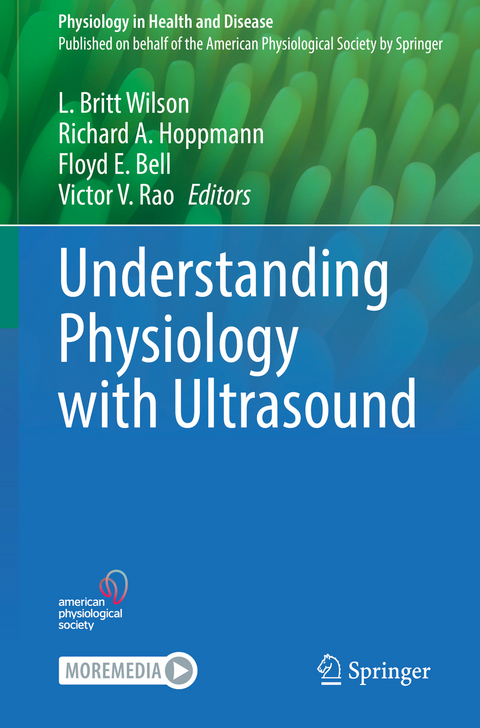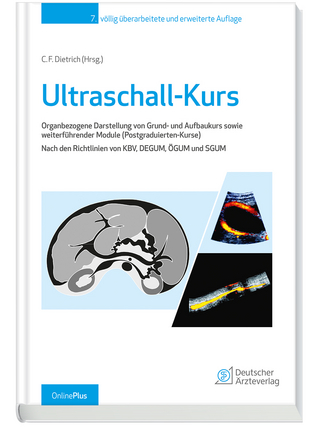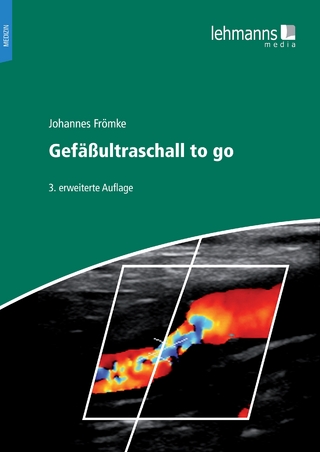
Understanding Physiology with Ultrasound
Springer-Verlag New York Inc.
978-1-0716-1865-3 (ISBN)
Ultrasound began to be used in medical student education in the 1990s and is steadily becoming a common teaching tool for courses like anatomy and physiology. It is a visual, highly interactive learning tool that bridges the basic and clinical sciences and allows the learner to observe physiology principles in a living model. Ultrasound is also being used to teach other health professions students as well as undergraduate college students and high school students. Despite this interest there are no books available that provide an introduction to ultrasound and how it can be used to enhance the teaching of physiology. This e-book will do just that as well as offer “How to Scan” videos with example laboratory exercises to further engage learners.
Dr. L. Britt Wilson is Professor of Physiology in the Department of Pharmacology, Physiology, and Neuroscience at the University of South Carolina School of Medicine in Columbia, SC. He received his PhD in physiology from Louisiana State University Medical Center in New Orleans, LA. Dr. Wilson did a postdoctoral fellowship in cardiology at the University of Texas, Southwestern Medical School in Dallas, TX. He has published numerous papers and book chapters on the neural control of the circulation as well as physiology education. He has been teaching physiology to a variety of health professionals, including fellows, and medical, graduate, nurse anesthesia, physician assistant, and nursing students for over 35 years. He has been a proud member of the American Physiological Society for over 35 years. Richard A. Hoppmann MD, FACP, FAIUM is a Professor of Medicine and Dean Emeritus at the University of South Carolina School of Medicine Ultrasound Institute in Columbia, SC. Dr. Hoppmann earned his Doctor of Medicine degree at the Medical University of South Carolina, completed his internal medicine residency at East Carolina University School of Medicine, and completed his rheumatology fellowship at Wake Forest University Bowman-Gray School of Medicine. He is board certified in Internal Medicine and Rheumatology. In 2006, as Associate Dean of Medical Education, he introduced the nation's first integrated ultrasound curriculum (iUSC) across all four years of medical student education at the University of South Carolina School of Medicine -Columbia. Since that time, he has also helped develop a number of ultrasound training programs, including one for physician assistants and a primary care ultrasound fellowship. He is founder and served as the first President of the Society of Ultrasound in Medical Education (SUSME) which hosts and co-hosts a number of national and international ultrasound education meetings such as the World Congress of Ultrasound in Medical Education and the Ultrasound in Anatomy and Physiology Education Conference. Dr Hoppmann is President-elect of the American Institute of Ultrasound in Medicine and a Past President of the World Interactive Network Focused on Critical Ultrasound (WINFOCUS). He has published and presented extensively on ultrasound education. He has been the recipient of almost $2M in ultrasound education grants, including those training a spectrum of teachers and healthcare practitioners from middle school life science teachers to primary care physicians in rural South Carolina. He has been issued four patents related to ultrasound and ultrasound education. Floyd E. Bell, III, M.D. is the Director of the Ultrasound Institute and Chair of Radiology at the University of South Carolina (UofSC) School of Medicine in Columbia, SC. He earned his Doctor of Medicine degree at the UofSC School of Medicine Columbia. He completed a transitional year internship atSpartanburg Regional Medical Center in Spartanburg, SC and then a diagnostic radiology residency at the University of North Carolina Hospitals in Chapel Hill, NC. He has published several papers on the use of ultrasound in medical education and has played a leadership role in the development and implementation of an integrated ultrasound curriculum at the UofSC School of Medicine Columbia. Dr. Bell has been frequently recognized for his excellence in teaching ultrasound to a wide variety of learners. Dr. Victor Rao is a radiologist by training. He has worked at different mission hospitals and at his private practice in India managing a spectrum of patients in the OPD as well as in the hospital. He has performed various minor surgeries and procedures such as cesarean sections, appendectomies, bowel repair, tubal ligations, tumor/hemangioma resection and laceration repairs, angiography etc. As director of research he conducted human clinical trials in the USA todetermine the effectiveness of HIFU to treat BPH and recurrent prostate cancer. He was the director of the ultrasound institute at the USC School of Medicine for 11 years and helped create all learning and testing content for the Point-of-Care ultrasound program for medical and PA students. He helped develop the POCUS CME program and the primary care US fellowship curriculum and training at USCSOM. He helped train physicians in Arusha, Tanzania and UST Manila in Point-of-Care ultrasound. Currently he is working at Inteleos as a POCUS educator and he designs and creates educational and testing content for clinicians around the world including limited resource settings.
Chapter 1: Using Ultrasound to Teach Physiology – An Introduction.- Chapter 2: The Basics of Ultrasound Physics.- Chapter 3: Ultrasound of the Vascular System.- Chapter 4: Ultrasound of the Heart.- Chapter 5: Ultrasound of the Respiratory System.- Chapter 6: Ultrasound of the Gastrointestinal System.- Chapter 7: Ultrasound of the Urinary System.- Chapter 8: Ultrasound of the Musculoskeletal System.- Chapter 9: Ultrasound of the Endocrine System.- Chapter 10: Ultrasound of the Reproductive System.- Chapter 11: Ultrasound of the Nervous System.- Chapter 12: Introducing Ultrasound into a Physiology Course from A to Z.
| Erscheinungsdatum | 05.01.2024 |
|---|---|
| Reihe/Serie | Physiology in Health and Disease |
| Zusatzinfo | 275 Illustrations, color; 30 Illustrations, black and white; X, 323 p. 305 illus., 275 illus. in color. |
| Verlagsort | New York, NY |
| Sprache | englisch |
| Maße | 155 x 235 mm |
| Themenwelt | Medizinische Fachgebiete ► Radiologie / Bildgebende Verfahren ► Sonographie / Echokardiographie |
| Studium ► 1. Studienabschnitt (Vorklinik) ► Physiologie | |
| Naturwissenschaften ► Biologie | |
| Schlagworte | Hands-on • Laboratory • Physiology • sonography • Teaching • Ultrasound |
| ISBN-10 | 1-0716-1865-2 / 1071618652 |
| ISBN-13 | 978-1-0716-1865-3 / 9781071618653 |
| Zustand | Neuware |
| Haben Sie eine Frage zum Produkt? |
aus dem Bereich


